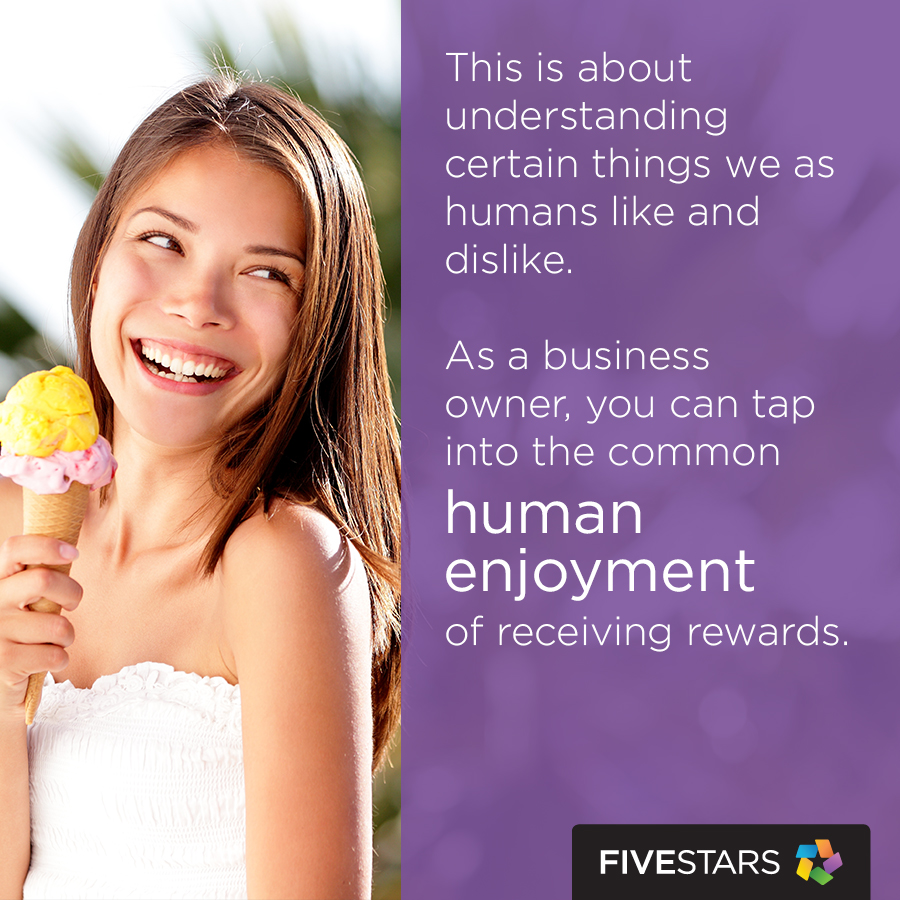What You Can Do to Transform Your Front Door into a Turnstile with Loyal Repeat Customers
Although the notion of customer loyalty seems like a no-brainer to us in this day and age, that wasn’t always the case. While it’s difficult to accurately ascertain the exact starting point of what would eventually be known as loyalty marketing, it’s clear that the concept has been around for hundreds of years. The first iterations usually involved creating some sort of secondary currency (box tops, proofs of purchase, trading stamps, etc.) that could only be earned and redeemed in-store, but would eventually evolve into our more modern notions of frequent flyer miles, credit card points or cash back on purchases, hotel club memberships and the like.
Loyalty programs, increasing customer spend in new ways
As loyalty programs have been a part of our collective cultural consciousness now for centuries, we as consumers have grown accustomed to them, and some would argue, expect them. It’s not uncommon for people to go out of their way to stick with one brand to earn more loyalty rewards, or to view and evaluate value propositions in an entirely different way.
As cognitive scientist Art Markman explains,
Because you may pay more for some flights on [your] airline in order to stick with the particular carrier, you may pay more for those simple comforts than you might be willing to pay if they were just offered to you directly. That is, you might not pay $40 for the opportunity to board early if it were offered to you at check-in, but you might pay $40 more for a flight on an airline where your loyalty club membership allows you to board early.
Turn an average customer into a loyal customer with basic psychology principles
The benefits of having loyal customers are obvious – slightly less obvious is what business owners can and should do to turn an average customer into a loyal one. What aspects of human psychology should be evaluated when considering your potential loyalty programs? What types of rewards should be offered and how should they be structured to maximize the likelihood of getting a customer to return and minimize the time in which they do it?
1. Use repetition to become a part of your customers’ regular routine
One of the biggest reasons loyalty programs work is that we humans are creatures of habit. We enjoy routines and at our core, like repetition. Your goal as a business owner should be to establish yourself as a part of your customers’ routines, so coming into your business and purchasing items becomes habitual. This is obviously a bit easier for certain businesses (i.e., people are much more likely to develop a weekly or possibly daily habit of coming by your coffee shop or bar than they will your tire shop or accounting firm), but the concept remains the same.
Business owners hundreds of years ago realized that the best way to engrain their wares into our daily/weekly/monthly routine was to reward customers for repeat behavior and purchases. The customer earns valuable rewards for repetition, and this repetition soon turns into habit… as long as the rewards earned are compelling.
2. Offer enticing rewards that are worth it, for your customer and your business
This is a crucial part of any successful loyalty program – the rewards proffered to your loyal customers have to be worth their time and more importantly, their money. When putting together your rewards program, try to constantly draw the line between truly enticing rewards and ones that make good financial sense for you to give out.
Too luxurious of a reward might draw in tons of people to enroll, but it may actually cost you too much if everyone quickly reaches the top-tier prize levels. If you go too chintzy with your rewards, it won’t be worth it for your customers. Ithaca College consumer psychologist Michael McCall suggests used the example of a coffee shop implementing a buy-nine-cups-get-the-tenth-cup-free program:
I am going to buy that 10th cup anyway, so the fact that I get it free is nice but all you are doing is giving me 10% of your product free. That’s great for the consumer, but for the retailer that may not be so smart. There may be other rewards you can give that don’t cut into a purchase I would make anyway.
A popular option that gets around this predicament is to partner with another business to offer their goods or services as a reward – you can acquire them at a substantially reduced cost (possibly free) in exchange for promoting them in-store, or possibly by offering YOUR goods or services to THEIR rewards program.
3. Use a point system to make earning rewards seem easier on the wallet
What about a points system? They have become more and more popular over the years, especially with credit card companies, and for good reason. Not only does a proprietary points system allow you to set up your own parameters and currency ($X spent earns you Y points), but it’s a perfect scenario to partner with other businesses and retailers, as mentioned before. Setting up an online page where customers can redeem their points, for example, is a great means of advertising the products that are up for grabs – you can offer up products from partners at an even further discounted rate in exchange for highlighting or feature them on the site.
Casino chips are easier to spend than real money, think of earning points the same way
When setting up a points system though, think about what you want the value of the points to be, in real-world dollars. There has been a lot thought put into changing currency from dollars to a proprietary system, and how that psychologically affects how we perceive value. It’s a big reason why casinos mandate that you use chips instead of dollar bills (seeing a $100 bill on the table makes you concretely understand what you’re wagering, whereas a black plastic chip is a bit different) and a big reason why Microsoft uses Microsoft Points instead of dollars and sense for all of its Xbox LIVE Marketplace transactions.
You can earn one OR ten points for your purchase. Which sounds better?
“Who thinks more is better than less?” Like the little girl in the funny AT&T commercial puts it, “We want more!”
Virginia Polytechnic Institute professors recently conducted a study that offered two groups of consumers two different loyalty programs – each group would receive the same $6 discount after spending $100, but one group received 10 points for each dollar spent and the other received 1 point for each dollar spent. Even though both groups would receive the exact same reward, the group that accumulated more points to reach that reward felt they were getting a better deal.
According to the press release about the study published in the University of Chicago Press:
‘Consumers are cognitive misers and do not do the necessary calculations to assess redemption costs. Instead, they use step-sizes to form impressions,’ the authors write. If step-sizes are large, the reward appears attainable as the progress-rate appears high (10 points/dollar). Because of the giant step-sizes, perceptions of those closer to the reward do not differ from those farther away. However, when step-sizes are smaller (1 point/dollar), those close to the reward believe that they have made a lot of progress, given the baby steps, relative to those farther away.
4. Create balanced rewards that benefit both frequent and high spending customers
Another aspect to consider when implementing your rewards program is how to target your most profitable customers. If you owned and operated a casino, which would be more valuable to you: someone that comes in 3-4 times per week and plays $10-$20 on nickel and penny slots while consuming free drinks and snacks, or someone that comes in once or twice per year and plays high-limit table games and slots for days at a time and eats meals at your finest restaurants? The obvious answer would be the second person, the “high roller”, but the way many loyalty programs are set up, the first person may very well receive more points/rewards.
Take into consideration not only how often someone comes through your doors, but how much total money they spend in a given year. Even if our “high roller” gambles less in two days than the first person does throughout the course of the year, he or she is more likely to spend money elsewhere at the casino (restaurants, bars, gift shops, activities, etc.). Drawing a balance between frequency of visit rewards and money spent rewards is key as it provides a benefit to all of your customer types – just try to keep overall revenue generated per customer in mind when establishing your program and reward tiers.
Focus on delighting your customers FIRST
When thinking about how psychology plays into rewards programs, it’s important not to view it as trying to come up with ways to manipulate your customers into coming back repeatedly into your business to buy things. This is not about Freudian tricks and dangling a gold pocket watch hypnotically in front of people to lure them into unnecessary purchases.
This is about understanding certain things we as humans like and dislike, and how as a business owner and marketer, you can avoid negative pitfalls and tap into the common human enjoyment of receiving rewards. Setting up a loyalty program with some few basic rules of thumb in place will ensure that your customers are happy, rewarded, and earning prizes on their own volition.






[…] What You Can Do to Transform Your Front Door into a Turnstile with Loyal Repeat Customers Although the notion of customer loyalty seems like a no-brainer to us in this day and age, that wasn’t always the case. […]